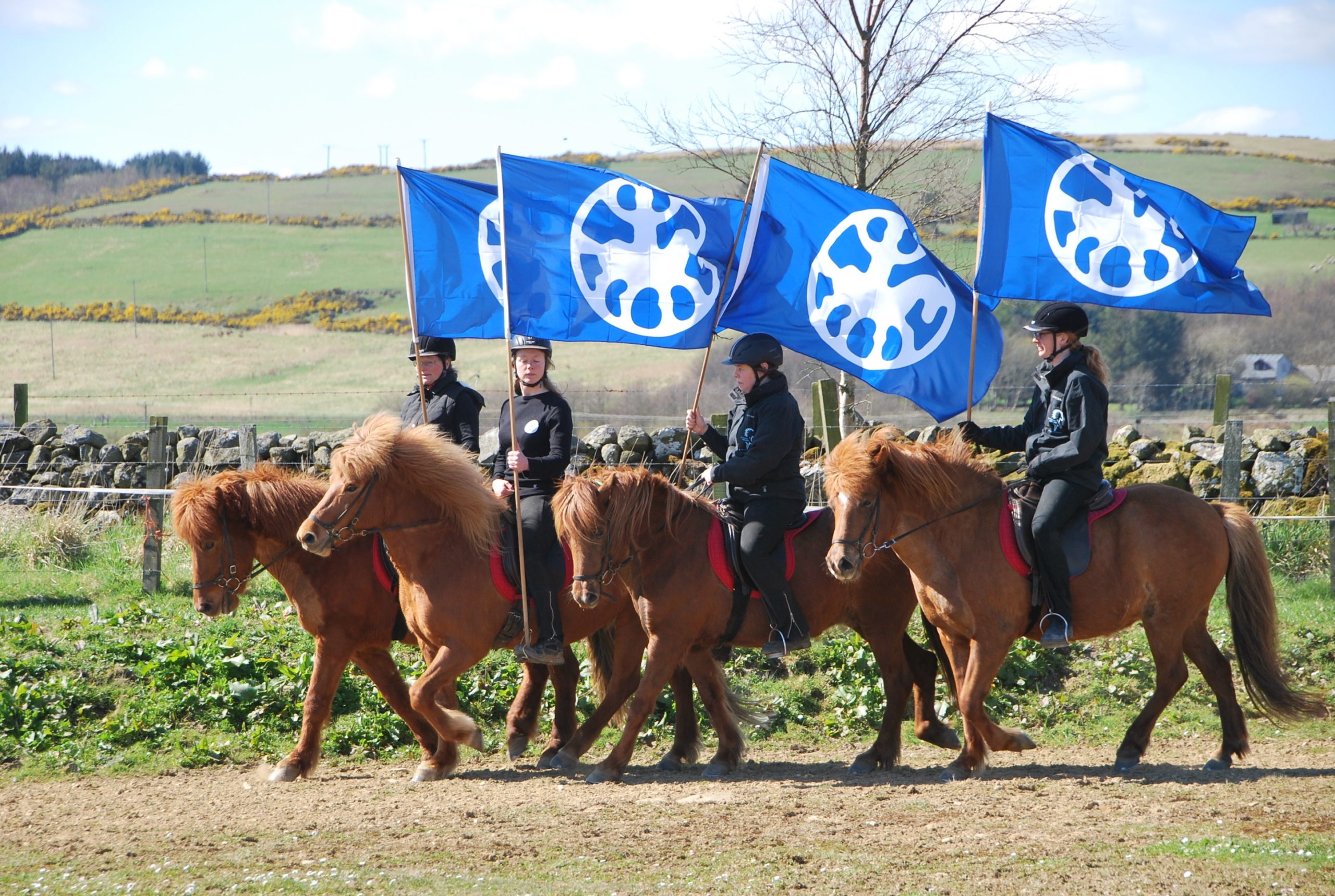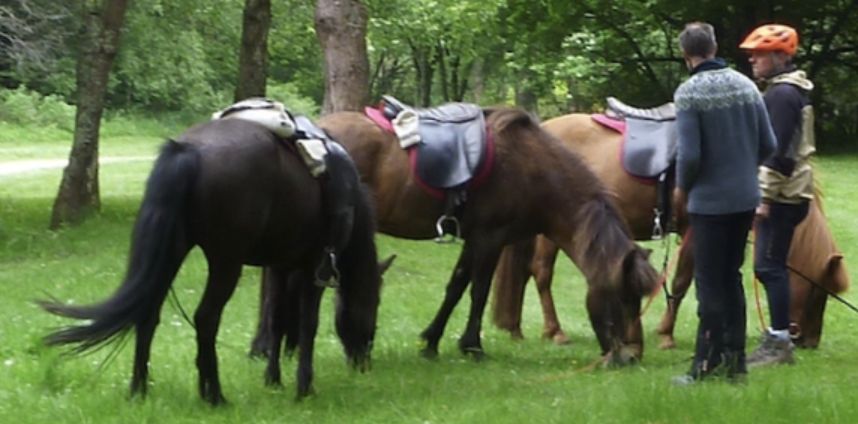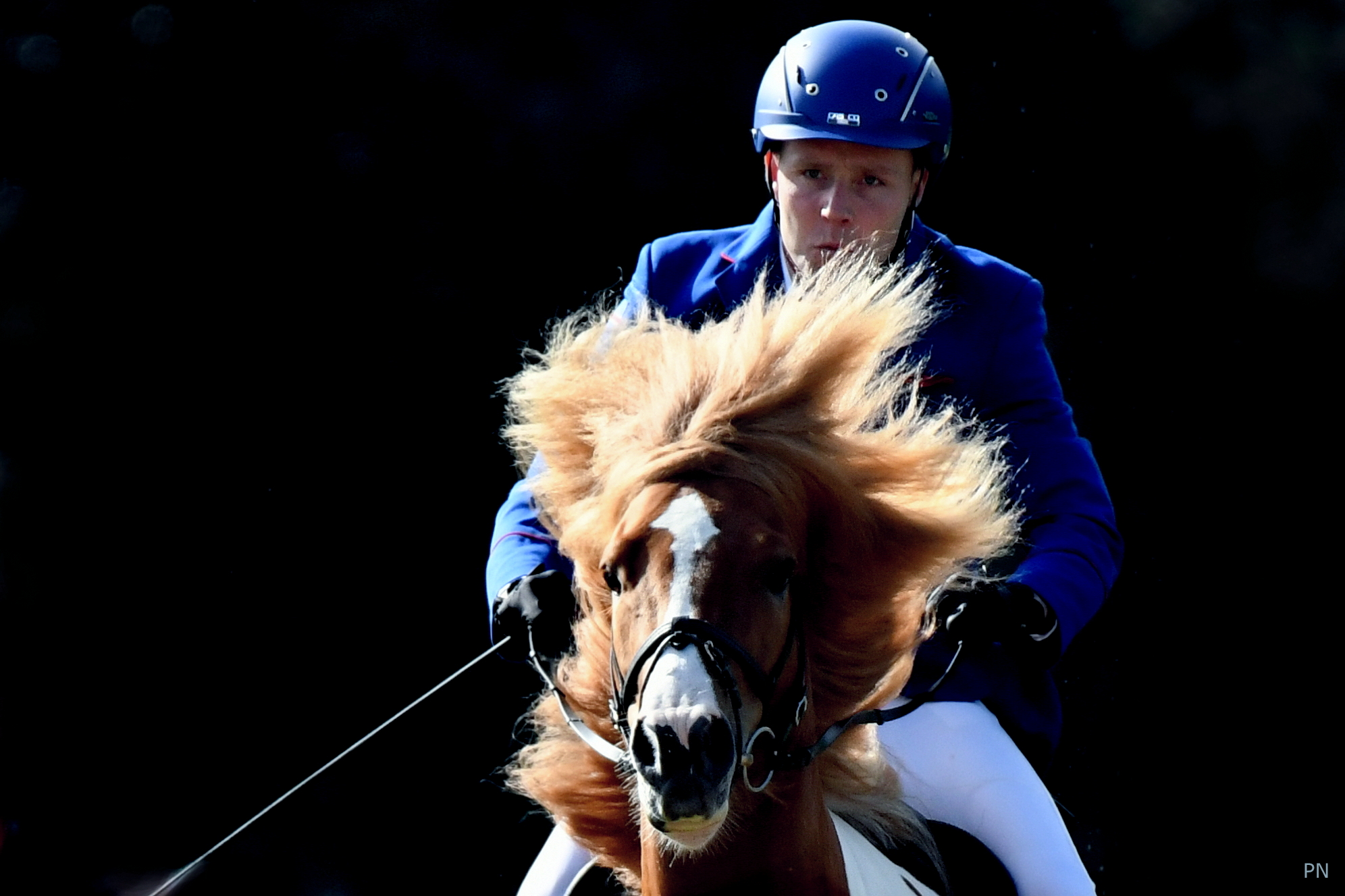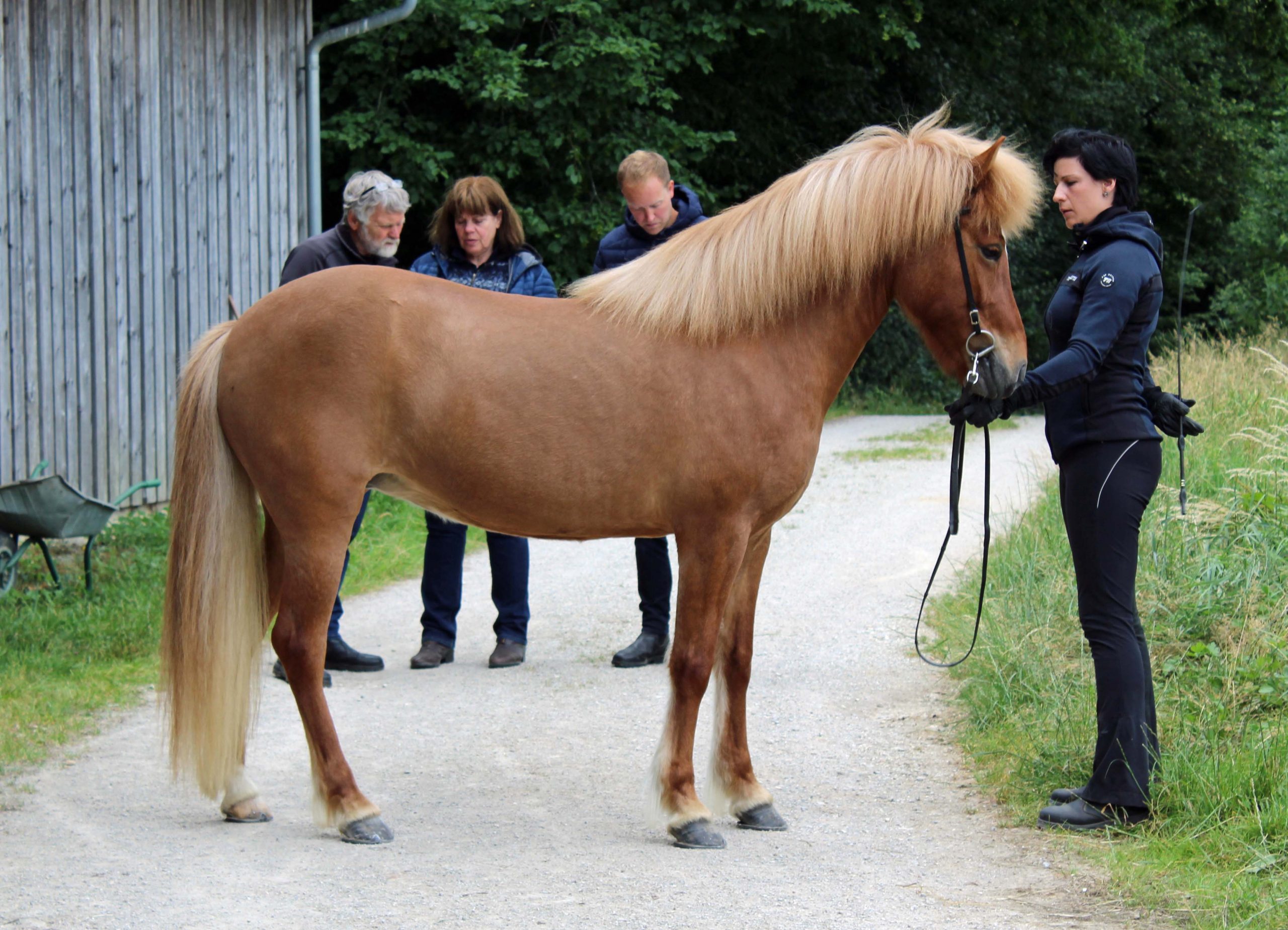
Photo: G.M.Sharman
Riding Icelandic Horses…
The Icelandic horse offers a challenging riding experience for adults and children, and requires the highest standards of horsemanship in riding the five gaits; walk, trot, canter, tölt and flying pace (skeið) in nature, at competitions and in breeding shows.
As a riding horse it is extraordinarily versatile – a capable, willing horse for pleasure riding, and for sport competitions, suitable for adults and children. The horse is tough, independent, yet sociable and easy to get on with, is self-assured and has good staying power.
The aspiration to promote the Icelandic horse to its full potential is at the heart of FEIF’s vision and mission.
….. as leisure rider
The majority of the Icelandic horse riders in FEIF member associations are leisure riders. The variety of activities ranges from riding lessons and clinics, to trail riding and occasional participation in competitions.
FEIF offers a platform for an international exchange of ideas, for learning from each other, and how to reach out to riders who are not connected
to any national Iceland horse association.
Securing a continued interest in leisure riding among a broad base of leisure riders is of paramount importance for the future of both breeding and competing. It is part of the communication about leisure riding that riding is joyful for all, regardless of gender, race, age and ability – and also, that good and harmonious riding at the same time is essential.


Photo: Peter Niess
…at sport events
At sport events the Icelandic horse is ridden on the oval track and there are gaited tests in tölt, four gait (walk, trot, canter, tölt) and five gait (walk, trot, canter, tölt and pace). The performance of horse and rider is judged, mainly through the quality of the gaits. In tölt, an even four-beat gait without suspension is required, one or two feet on the ground at any single moment. Pace should have a clear moment of suspension but can have a visible four beat characteristic because of the action of the front legs. It should be ridden at racing speed.
On (straight) pace tracks races in pace (both with flying start and start from start boxes) take place. The pace track is also used for the pace test, a test focussing on the combination of the quality of the gait and the speed.
Other tests emphasize other qualities of horse and rider, like flag race, trail, cross country, in hand showing and free style performance.
… or present breeding horses
At a breeding show, the first part is called conformation. The conformation should be functional and promote the health and durability of the horse where carrying ability, natural gaiting ability and the capacity to move under a rider in balance and correct body function are paramount. The conformation should also be characterized by beauty and attractive appearance with an emphasis on strength and muscularity.
The ridden ability part shall show a quality gaited horse that has a natural ability to carry a rider in balance, self-carriage and is beautiful when ridden, a horse that is agile, sure-footed and with good stamina – a true Icelandic gæðingur.
The main goal with regards to the gaiting ability is that the gaits have correct beat and body function, the horse is moving freely in an even rhythm. The gaits should moreover possess suppleness, lightness, long strides and speed capacity.

Photo: Kristín Halldorsdóttir
Related news
FEIF Conference 2026 in Budapest, Hungary
The intention of the yearly conference is that as many representatives as possible from each member country can take part in specific and general discussions but also meet colleagues from other departments and through that contact get inspiration from and benchmark...
FEIF Delegates’ Assembly 2026
The FEIF Delegates’ Assembly is the highest decision-making body of FEIF. At the Delegates’ Assembly, representatives (delegates) from all member associations gather (once a year) to vote on major organisational matters: this includes electing FEIF’s President and...
Instruction for reading the chip for judges and organizers at competitions are published
To get correct, validated marks in WorldFengur, there must be no doubt that the rider has brought the correct horse. It is also important for vaccinations. The rider is responsible for proving to have brought the correct horse to the competition. The identification is...
Update to the coat colour coding system in WorldFengur
This spring, the WorldFengur coat colour coding system was updated and now uses five digits instead of four. The new system makes it possible to record the coat colours of Icelandic horses with greater accuracy. During the update, several errors were identified,...
End of the WorldRanking competition season 2025
The WorldRanking season 2025 ended in mid-October with the autumn competition at the Icelandic Horse Farm Klettgaublick in Switzerland. With 138 registered competitions, this was more WorldRanking events than ever before! More exciting facts & figures:...
Good and Harmonious Riding 2025
FEIF congratulates the 101 riders who have been nominated for Good and Harmonious Riding in the 2025 competition season. Thank you to all riders listed for being such excellent examples of the type of riding we hope to see in our sport! Bas Cornielje (NL) who was also...
World Championships 2029 goes to Herning DK
FEIF is delighted to announce that the 2029 World Championship will return to Denmark and take place in Herning. The hosts will prioritize community, ‘good vibes’ and promise that the championships will offer more than just a competition: it aims to unite people to...
New BLUP values – autumn 2025
New BLUP values have been stored in WorldFengur but the last breeding show of the season ended in the second week of September. Now the BLUP calculations are based on scores from breeding shows as well as competition results. Results from the following competition...
FEIF committee meetings 2025 in Frankfurt
The FEIF Committee meetings 2025 took place from October 17-18 in Frankfurt, Germany. The feedback from all committees was that the discussions were constructive, interesting, and fruitful. Below you will find a short summary of the discussions in the different...






